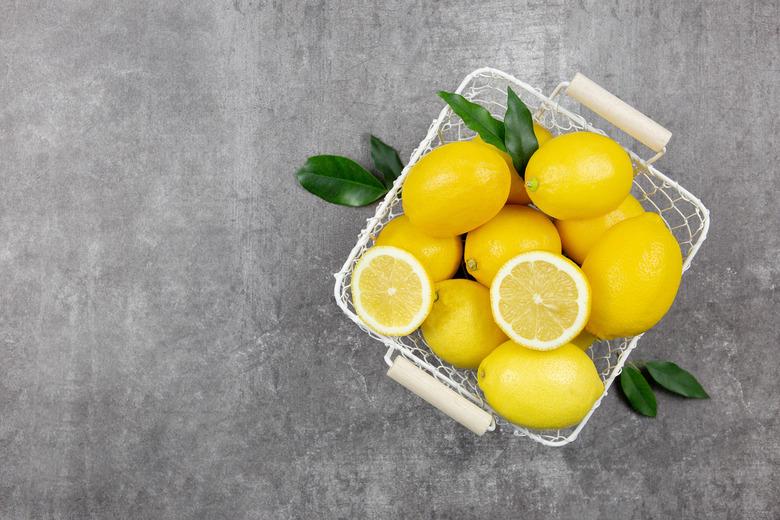What Causes Lemons To Be Brown Inside?
Growing lemon trees (Citrus x limon, U.S. Department of Agriculture plant hardiness zones 9 through 11) indoors or out can provide you with a beautiful, fragrant, colorful display of useful fruit. However, problems may occur with your lemon tree that can make your fruit unusable. Lemons that turn brown inside, for example, are unappealing to consume. Knowing what causes lemons to be brown inside can help you prevent the issue, allowing you to grow healthy lemons.
Tip
Pests or mineral deficiency can cause lemons to turn brown inside
Lemon Tree Pests
There is one pest that can cause your lemons to be brown on the inside. The spined citrus bug (Biprorulus bibax) can pierce the rind of the fruit and feed on the inner flesh. Once the protective rind has been compromised, the remainder of the internal fruit can begin to dry out and turn brown. You may notice brown, gummy patches on the skins of your lemons as well. Spined citrus bugs can also cause trees to drop lemon fruits before they're fully ripe.
Spined citrus bug management is best focused on the removal of adult insects. You can remove the insects by hand or apply a commercial pesticide, but only when more than 10 percent of your tree is infested. Make sure to read and follow all label instructions and take adequate safety precautions when using any pesticide, including wearing gloves and goggles to protect your skin and eyes.
Lemon Tree Mineral Deficiency
If it's not pests causing your lemon browning issue, it's likely that a soil mineral deficiency is to blame. Boron is important for the flowering, pollen-tube growth, fruiting and hormone activity of your lemon tree, and a lack of it in the soil can cause many problems, one of which is brownish portions, sometimes called gum pockets, within the white part of your lemon rind.
If you think your soil may be deficient in boron, a good way to check is through a soil test. You can also contact your county extension service to perform the test or find labs that conduct professional soil analysis. Soil that's low in boron may be treated with borax powder, although it's important not to overapply borax to your soil, as too much can cause boron toxicity. For home gardeners, 4 teaspoons of borax per 1,000 square feet are equivalent to 1 pound of boron per acre, according to MSU Extension.
Harvesting Lemon Fruits
The period between your lemon tree flowering and fruit being ready to harvest depends on many factors, including your lemon tree cultivar, the temperature and growing conditions, and cultural practices. The fruiting cycle can be as varied as much as four to 12 months. Flowering tends to occur between December and March, but fruit harvest can be in the following summer, fall or winter.
You'll know when your fruit is ready to pick by looking out for mature fruits with bright-yellow peels and good fruit size. You can then taste a fruit to gauge whether it's really time to harvest.
References
- NSW Department of Primary Industries: Spined Citrus Bug
- Green Harvest: Organic Citrus Care
- Deep Green Permaculture: Citrus Problems – Why Is My Citrus Tree Dying?
- Aggie Horticulture: Home Fruit Production – Citrus
- Clemson Cooperative Extension: Citrus
- University of Florida IFAS Extension: Boron (B) and Chlorine (Cl) for Citrus Trees
- University of Florida IFAS Extension: Lemon Growing in the Florida Home Landscape
- MSU Extension: Why Does Boron Show Up on My Soil Test Report?
